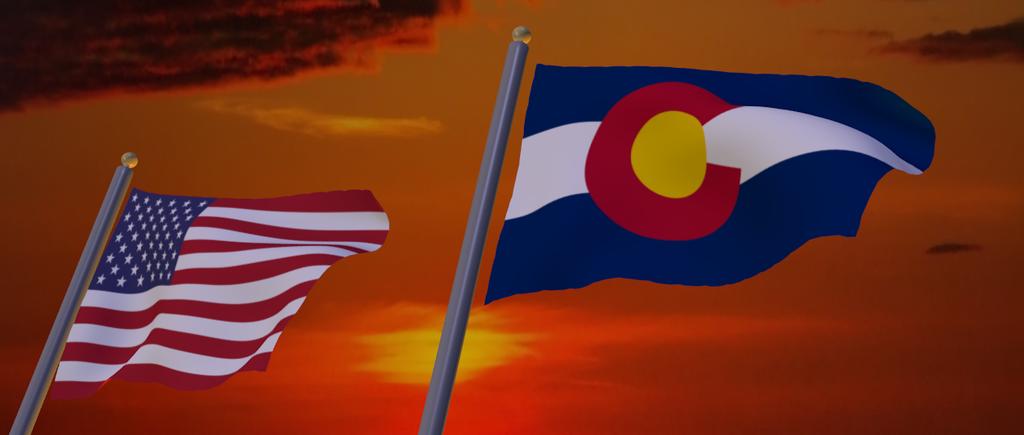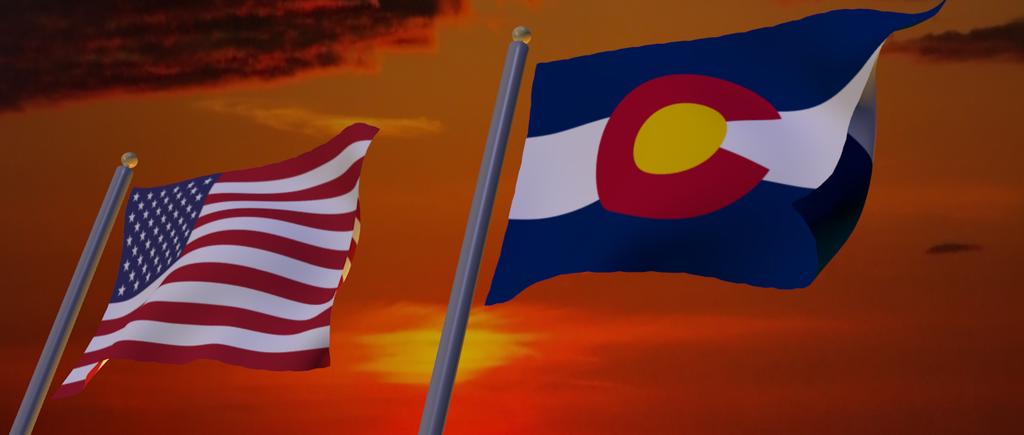If I were to look at your second render, purely as a photograph, I would say that you were illuminating the face of the flags (inadequately) using a strobe flash … and that the white-balance setting on your camera was wrong because the (underexposed) faces of the flags are distinctly blue.
I’d go back to your first render, to start with.
On that render, the flags might be a little-bit overexposed; a little-bit “washed out.” But, all in all, that’s considerably better than having something be underexposed and illuminated by the wrong color-temperature of light.
I would suggest that you adjust the color of your front illumination. There are plenty of color-temperature charts on the web with corresponding suggested RGB values. Choose one for “noonday sun,” or, as your background strongly suggests, “late evening.”
Consider also just where you want the primary source of illumination to be. Your background appears to include el Sol, therefore I would expect the primary illumination … of both the flags and of the poles … to be coming from behind, and to be very distinctly orange. This also means that, if this were a real-world photograph shoot, I would probably have my assistants on a tall ladder holding large reflectors to bounce some of that evening sunlight onto the faces of the flags. However, because my reflectors are never going to shine as much light on the front as el Sol will shine upon the back (nor would I want them to do so…), the flag surfaces will not have the strong, crisp details that they might have (in a very close-up shot, which this is not…) that they would have had twelve hours earlier in the day.
Again speaking from a real-world-photograph standpoint, you have devised a somewhat difficult shot. An experienced photographer would compensate as best he could, and his or her photograph would exhibit those compromises. The viewer, having seen thousands of such photographs in magazines and so forth, “knows what to expect to see,” and expects to see what he knows.
The flags would be clean; freshly laundered. No one wants to shoot a dirty flag. The exposure would be such that the whites are clean, bright whites, which by-itself borders on overexposure. So, “seeing a lot of cloth detail” on a flag waving twenty feet up in the air is fairly unlikely.
I would focus my attention on three things:
- Eliminating the anti-aliasing “halo” around the edges of the flags, without creating sharp edges. (Alter the treatment of the edge, so that the background color is blended-in to the gap, instead of, as it is now, the flag-color being attenuated.)
- The direction of the light, especially as evidenced by the flagpole.
- Texturing and coloring of the flagpole.
Try to get out there and take a look at the real thing. Look at the light. If it’s “too damm cold” to stand outside these days looking at real flagpoles, go study reference images.

 Any help would be great.
Any help would be great.


